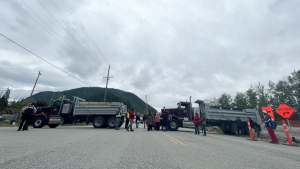Historical
Evidence on modes of training from the past are unfortunately so limited that it is hard to establish firm conclusions in this area. Few accounts detailing apprenticeship have survived over time. However, those accounts that have, mostly from the eighteenth and nineteenth centuries suggest that apprentices gradually acquired skills in their trade over a period of several years, often beginning their apprenticeship with a period of relatively unskilled labor (Wallis, 2012). Yet, what has seemingly continued to exist through centuries, various regimes, differing governments, and across geographical borders, is the “time based” apprenticeship model.
Contracts and writings from the 16th Century show that apprenticeship program durations in Dutch regions were recognized to be four years in duration. Other documentation from European countries suggest similar time frames. Today, in Canada, most trade programs are designed for the apprentice to complete in a four-year period.
Delivery- A Reflection of Guilds
One can argue that the delivery of apprenticeship in Canada has changed little over the course of time. While there have been small iterations that cosmetically altered the look of a program, most apprenticeships still follow a 4 year training cycle. This involves:
- release from the workplace to attend school
- completing the required work place hours
- having a journeyperson (master tradesperson) oversee an apprentice
- successfully writing the Interprovincial Red Seal exam
However, one apprenticeship model that operationally is more “guild” like than any other trade is the Power Line Technician trade.
In centuries past, Guilds within European countries controlled different trades. Their involvement with apprenticeship customarily consisted of four characteristics:
- indenturing apprentices
- setting the term of the apprenticeship
- charging apprenticeship fees, and
- occasionally setting the ratio of apprentices per master (Schalk, 2015).
The same tenets that were operational components of Guilds from days gone by can be seen within many Union sectors today. Union administration will monitor labor market trends and closely observe economic forecasts to assist them in projecting the necessary workforce required. This labor information helps determine how many apprentices should be in the trade, at what apprenticeship level, and the skill sets necessary for inclusion within the trade training program. Further, unions will indenture apprentices and many negotiated Labor Agreements prescribe the journeyperson to apprentice ratio for the trade. In review, not much has changed and conceivably what is old is new again.
Industry Engagement
The Powerline Technician Apprenticeship model within British Columbia is guided by the Industry it supports. The Line Contractors (companies) together with the Electrical Union (IBEW- Local #258) representing the PLT trade workers formed the Joint Line Apprenticeship Training Association (JLATA). Created in 1994, the “Guild-like” JLATA has a Board of 9 Directors. The board is comprised of four representatives from Local 258 and four contractor representatives. The neutral chairman of the board is appointed and has no affiliation with the contractors, the trade, or the union. The JLATA operates solely to provide the best training and learning experience for the apprentice – period.
The model is quite simple. Companies signatory to the Master Line Agreement hire young workers into a “trade’s trainee“ position where they are evaluated daily in consideration of advancement to apprenticeship indentureship. Each year, trainees who show potential in the trade have their names forwarded to the Board. After considerable and careful evaluation, the Board approves, on average, 15 trades trainee advancements to apprenticeship. Trainees that do not make the cut are provided with the “reasons why” and how they can improve to be considered during the next round. These board approved young workers are indentured as apprentices to the JLATA – not the individual companies.
Mentoring
During the apprenticeship journey, apprentices are monitored and mentored frequently. Each supervisor of an apprentice submits a number of progress reports to the JLA. It is not uncommon for Board members to visit apprentices on various job sites during the year. One advantage of this apprenticeship model is the JLATA has the responsibility for the apprentice. Should the apprentice not have exposure to the full scope of the trade with a single employer, the JLA arranges for the apprentice to be moved to another company where the missing competencies and skills are being delivered. It is not uncommon to see an apprentice moved from one employer to another during their apprenticeship. This practice provides exceptional value as “no apprentice is left behind”. As a result the industry is much better served.
While no apprenticeship model is perfect, this model continues to perform exceedingly well. Completion rates of apprentices who attain journeyperson status are at the high end of all trades nationally and pass rates on the Inter Provincial exams are exceptional.
The Power Line Technical apprenticeship model operating in BC is very similar to the Guilds of old. When contractors and their representing union work together to guide an exceptional outcome – year after year, it is hard to argue against a model of success.
Dr. Langill holds Red Seal certification in 3 trades, has a Bachelor of Education and Master of Arts from UBC along with a Doctorate from the University of Calgary. He is Board Chair of the Joint Line Apprenticeship Training Association.











Recent Comments
comments for this post are closed